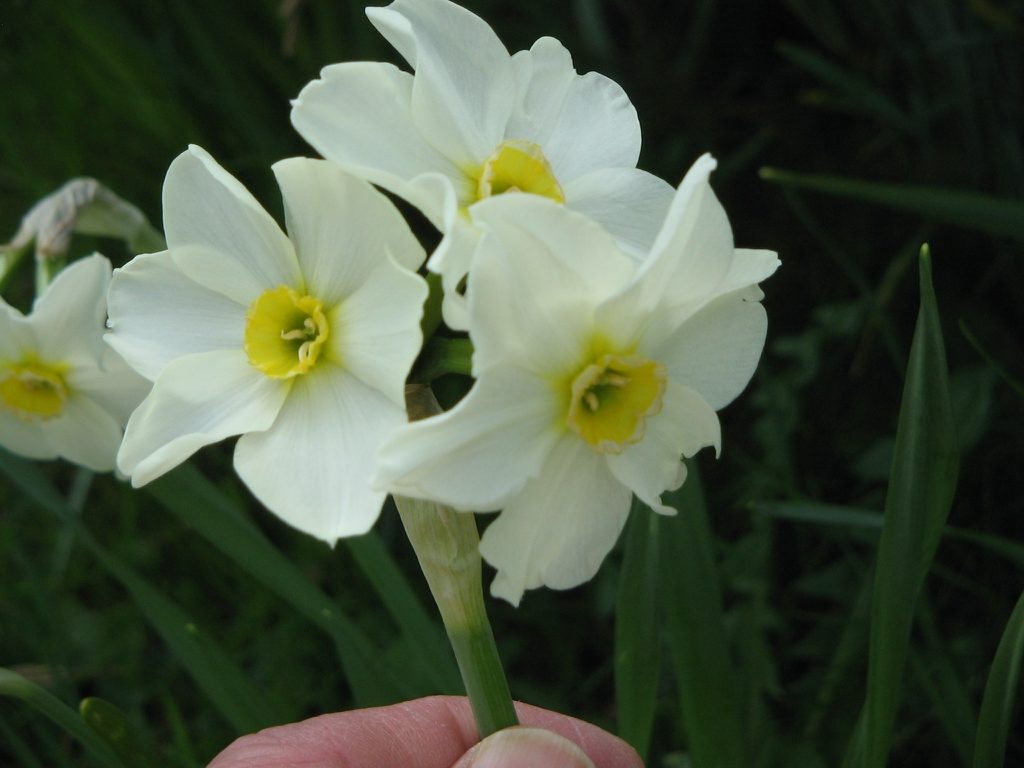Home Insteading With Cooperative Extension (Week 36)
go.ncsu.edu/readext?755070
en Español / em Português
El inglés es el idioma de control de esta página. En la medida en que haya algún conflicto entre la traducción al inglés y la traducción, el inglés prevalece.
Al hacer clic en el enlace de traducción se activa un servicio de traducción gratuito para convertir la página al español. Al igual que con cualquier traducción por Internet, la conversión no es sensible al contexto y puede que no traduzca el texto en su significado original. NC State Extension no garantiza la exactitud del texto traducido. Por favor, tenga en cuenta que algunas aplicaciones y/o servicios pueden no funcionar como se espera cuando se traducen.
Português
Inglês é o idioma de controle desta página. Na medida que haja algum conflito entre o texto original em Inglês e a tradução, o Inglês prevalece.
Ao clicar no link de tradução, um serviço gratuito de tradução será ativado para converter a página para o Português. Como em qualquer tradução pela internet, a conversão não é sensivel ao contexto e pode não ocorrer a tradução para o significado orginal. O serviço de Extensão da Carolina do Norte (NC State Extension) não garante a exatidão do texto traduzido. Por favor, observe que algumas funções ou serviços podem não funcionar como esperado após a tradução.
English
English is the controlling language of this page. To the extent there is any conflict between the English text and the translation, English controls.
Clicking on the translation link activates a free translation service to convert the page to Spanish. As with any Internet translation, the conversion is not context-sensitive and may not translate the text to its original meaning. NC State Extension does not guarantee the accuracy of the translated text. Please note that some applications and/or services may not function as expected when translated.
Collapse ▲4-H at Home
Camaryn Byrum, 4-H Agent
Thanksgiving Leaves
Thanksgiving is a very special holiday; an entire day devoted to spending time with the ones we love. Thanksgiving is a time to be thankful for the things we have, like our family, our friends, and our health. What are you thankful for this Thanksgiving? Complete the Thanksgiving Leaves activity below.
Activity: Color/decorate the leaves below. On each leaf, write out some things that you are thankful for. Cut out the leaves and display them around your home. These leaves will be a reminder to why we celebrate Thanksgiving and what we are grateful for this year.

Family and Consumer Sciences at Home
Mary Morris, Family and Consumer Sciences Agent
What to do with Turkey Leftovers
After the Thanksgiving meal you may have an abundance of Turkey leftovers. Here are some ways first to store and keep those turkey leftovers safe but also some recipe ideas for repurposed turkey.
Make sure after the turkey has been cooked and cooled that you store turkey leftovers in the refrigerator. As soon as possible go ahead and cut the turkey off the bone, store in storage bags lay flat in the refrigerator, and get the temperature down to below 41 degrees. If you store turkey below 41 degrees quickly then you will have a 7-day window to use these leftovers in other dishes. Use multiple storage bags to keep the portions smaller, this will make cooling it down faster once you put it in the refrigerator. Follow these Basic Holiday Food Safety Tips to keep all of your holiday food dishes safe.
Once you have everything stored safely here are a few recipes that you can use to repurpose that leftover turkey. If you have food safety questions please call or email Mary Morris at 252-482-6585/ mary_morris@ncsu.edu. I will be checking my email through the holiday this week. Happy Thanksgiving!
Horticulture at Home
Katy Shook, Area Horticulture Agent
Poisonous Plants
Each year, thousands of calls are made to the poison control center from concerned parents whose children have ingested an unknown plant. With the abundance of berries and nuts on plants at this time of year, it is important for anyone with young children, and spending time outdoors, to be aware of the potential hazard. While eradication is not possible or even recommended, education is an effective way to manage and reduce potential problems.
Residents may be surprised at the number of landscape plants that are poisonous. Azalea, boxwood, daffodil, holly, hydrangea, and oak (acorns) are all poisonous to humans. Severity can range from low to high, and include symptoms that range from rash and nausea, to paralysis and death.
All parts of a plant can be poisonous, but not all parts of the same plant are poisonous. To help identify poisonous plants and plant parts, use the NC State Extension Gardener Plant Toolbox. Keep in mind that plants that are poisonous to humans are not always poisonous to birds or animals; do not use them as a guide to toxicity.
If accidental ingestion occurs, follow these first aid tips from the Carolina Poison Center:
- Immediately remove any remaining pieces from the mouth.
- Call Carolinas Poison Center right away at 1-800-222-1222. Don’t wait for symptoms to appear.
- Follow instructions from Carolinas Poison Center staff about collecting any remaining plant pieces.
For more information on poisonous plants, contact Area Horticulture Agent Katy Shook at (252) 482-6585.

All parts of a daffodil plant are poisonous; the bulb is the most poisonous part.



